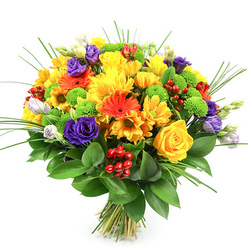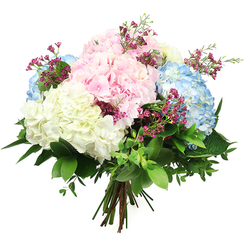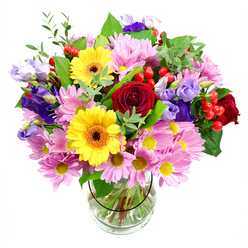Top Tips For Looking After Flowers Thamesmead
How to Care for Your Thamesmead Flowers: Local Florist Secrets
Flowers Thamesmead are a joyful addition to any home, business, or special event. Whether you’ve received a stunning bouquet from a local florist, decorated your wedding venue, or brightened your office with vibrant blooms, learning the right flower care is key to keeping your Thamesmead flowers looking their freshest. Our experienced florists, who have been serving the Thamesmead community for years, have put together a comprehensive guide to help you extend the life and beauty of your flowers. Follow these practical, expert-backed tips to make the most of every petal.
General Care for Fresh Flowers Thamesmead
When you first receive your flowers, start by unwrapping them carefully and trimming the stems at a 45-degree angle. This increases the surface area for water uptake, ensuring that your blooms stay hydrated and healthy. Remove any leaves that would sit below the waterline, as submerged foliage encourages bacterial growth that can shorten the vase life.
Use a clean vase (thoroughly washed with warm, soapy water) to prevent the accumulation of bacteria that can cause stems to rot. Fill the vase with fresh, cool water and add the flower food provided by your Thamesmead florist. If no flower food is available, a mix of one teaspoon sugar and a few drops of bleach per litre of water can help. Position your arrangement away from direct sunlight, heating vents, air conditioners, and bowls of fruit (which release ethylene gas and can speed up wilting).
Seasonal Thamesmead Flowers Care Tips
Each season brings different flowers, each with unique needs. Paying attention to the seasonality of your arrangement will help you care for your Thamesmead flowers more effectively.
Spring
Delicate spring blooms like tulips and daffodils need plenty of fresh, cool water and perform best in cooler rooms. Keep them away from sources of heat, and change their water daily. Tulips continue to grow after they’re cut, so trim the stems every couple of days for a neat, graceful look.
Summer
Summer bouquets often include roses, sunflowers, and peonies. These flowers love fresh water but can suffer in high heat. Make sure not to overcrowd the vase, and top up the water regularly as evaporation is faster during warm months. Mist your flowers lightly with water to help them stay hydrated, but avoid soaking petals as it could encourage rot.
Autumn
Autumn arrangements feature strong blooms like chrysanthemums and dahlias. These stems are sturdier but still need clean water—change it every two days, and rinse the vase to prevent bacteria. Remove wilted blooms promptly to stop them from affecting healthy flowers.
Winter
Winter flowers, such as amaryllis and hellebores, can be more delicate. Keep them in a cool spot away from radiators and fireplaces. Because central heating dries indoor air, consider placing a humidifier nearby or gently misting your arrangement daily.
Extending Vase Life: Hacks from Thamesmead Florists
Our Thamesmead florists recommend a few extra tricks for maximising the lifespan of your bouquet:
- Re-trim the Stems: Every two days, re-cut your flower stems at an angle to open up water channels.
- Change the Water Regularly: Fresh water is essential, so change it every two days or as soon as it looks cloudy.
- Use Lukewarm Water: Most flowers prefer room temperature or slightly warm water for quick hydration.
- Avoid Direct Draughts: Keep arrangements away from open windows or fans to slow down evaporation and wilting.
- Remove Spent Flowers: As individual flowers fade, remove them right away to prevent decay from spreading.
- DIY Flower Food: If your bouquet didn’t come with flower food, combine one teaspoon of sugar, one teaspoon of white vinegar, and half a teaspoon of household bleach per litre of water for a homemade substitute.
Expert Advice for Specific Varieties Popular in Thamesmead
- Roses: Remove thorns and leaves below the waterline, trim stems every few days, and use deep water. Keep away from ripening fruit and extreme temperatures.
- Lilies: Pollen can stain, so snip off the anthers (pollen sacs) as soon as the blooms open. Lilies enjoy cool water and last well in shaded spots.
- Orchids: Use tepid water and mist lightly. Never let them stand in water, as their roots are prone to rot.
- Gerberas: Their stems are sensitive—use shallow water and handle with care.
- Hydrangeas: Submerge wilted heads in water for 20 minutes to refresh them. Change vase water frequently for these thirsty flowers.
Flower Arrangements for Homes, Weddings, and Businesses
Our Thamesmead florists cater to diverse needs, from intimate home displays to grand wedding bouquets and robust business arrangements. No matter the setting, a few core principles always apply:
- Home: Place arrangements in communal spaces but away from high-traffic areas to prevent accidental knocks. Keep out of reach of pets and children if blooms are toxic.
- Weddings: Keep bouquets in water as long as possible before the ceremony to preserve freshness. Store in a refrigerated area if feasible, and mist lightly for extra longevity.
- Businesses: For reception or meeting room displays, select long-lasting varieties and schedule regular maintenance (fresh water, trimming, removal of faded blooms) to maintain a professional appearance.
Common Problems and Thamesmead Florist Solutions
Sometimes, despite your best efforts, flowers lose their vibrancy. Thamesmead Flowers customers often ask how to deal with rapid wilting or droopy stems. Here’s what our expert florists suggest:
- Wilting Petals: Can occur if flowers have not had enough water. Try re-cutting stems and placing them in fresh, cool water immediately.
- Bacterial Cloudiness: Clean the vase, rinse stems, use fresh water and a pinch of bleach to kill bacteria.
- Droopy Stems: For gerberas and tulips, wrap loosely in newspaper and stand them upright in warm water for a couple of hours.
- Mildew or Rot: Remove affected flowers promptly and thoroughly clean the vase before replacing other stems.
Eco-Friendly Flower Care in Thamesmead
Caring for your Thamesmead flowers can be planet-friendly too. Re-use rainwater for vases, compost plant trimmings, and look for locally-grown bouquets to support Thamesmead growers and reduce your carbon footprint. Our florists are always happy to advise on sustainable practices when you order locally.
Enjoy the Full Beauty of Thamesmead Flowers
With expert advice from local Thamesmead florists, your cut flowers can remain a vibrant statement in your home, business, or at your special event. Remember: fresh water, clean vases, strategic trimming, and avoidance of direct heat or draughts are the secret to keeping Thamesmead flowers looking their best. With these care tips, you can enjoy the colour and fragrance of nature’s finest for even longer.














